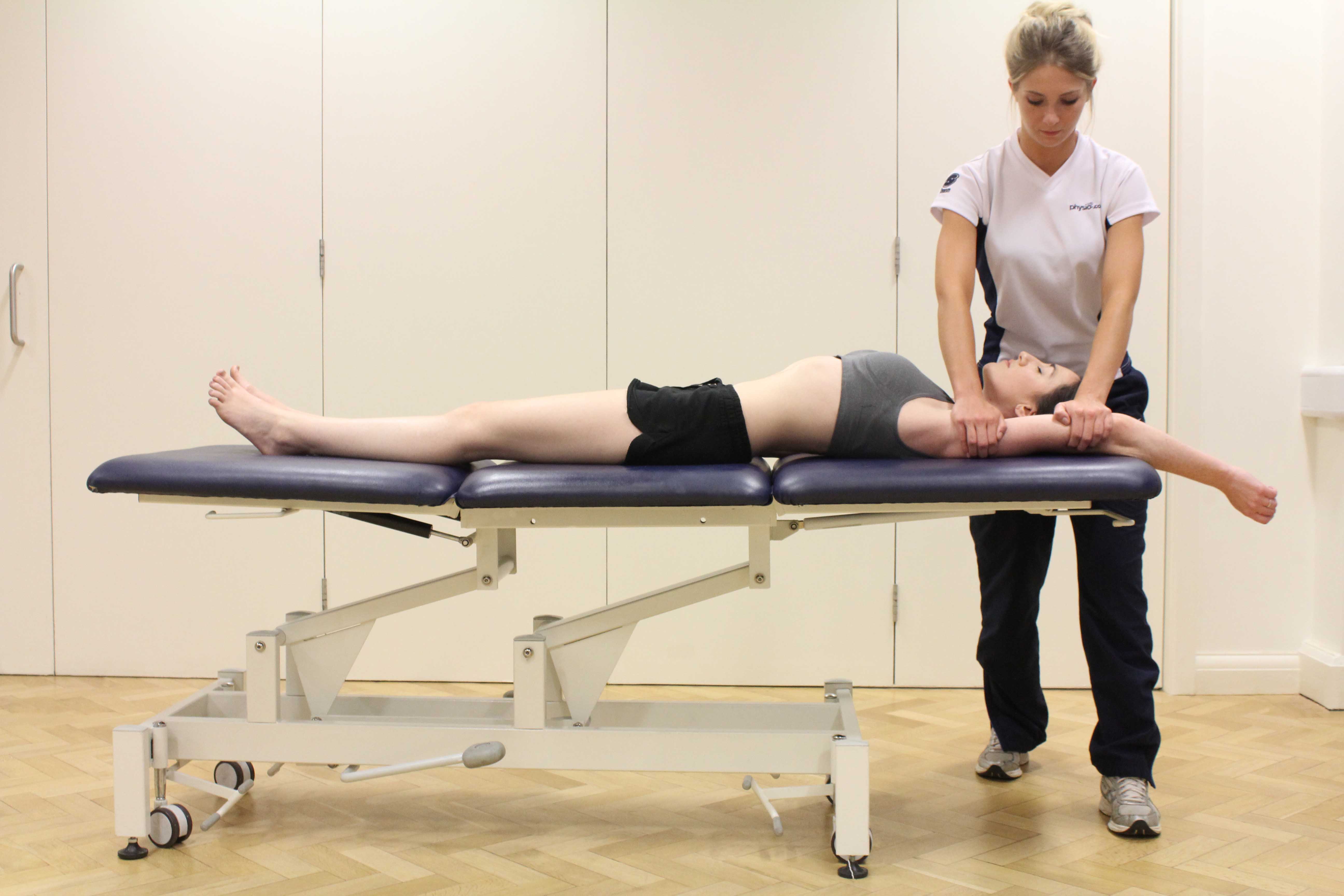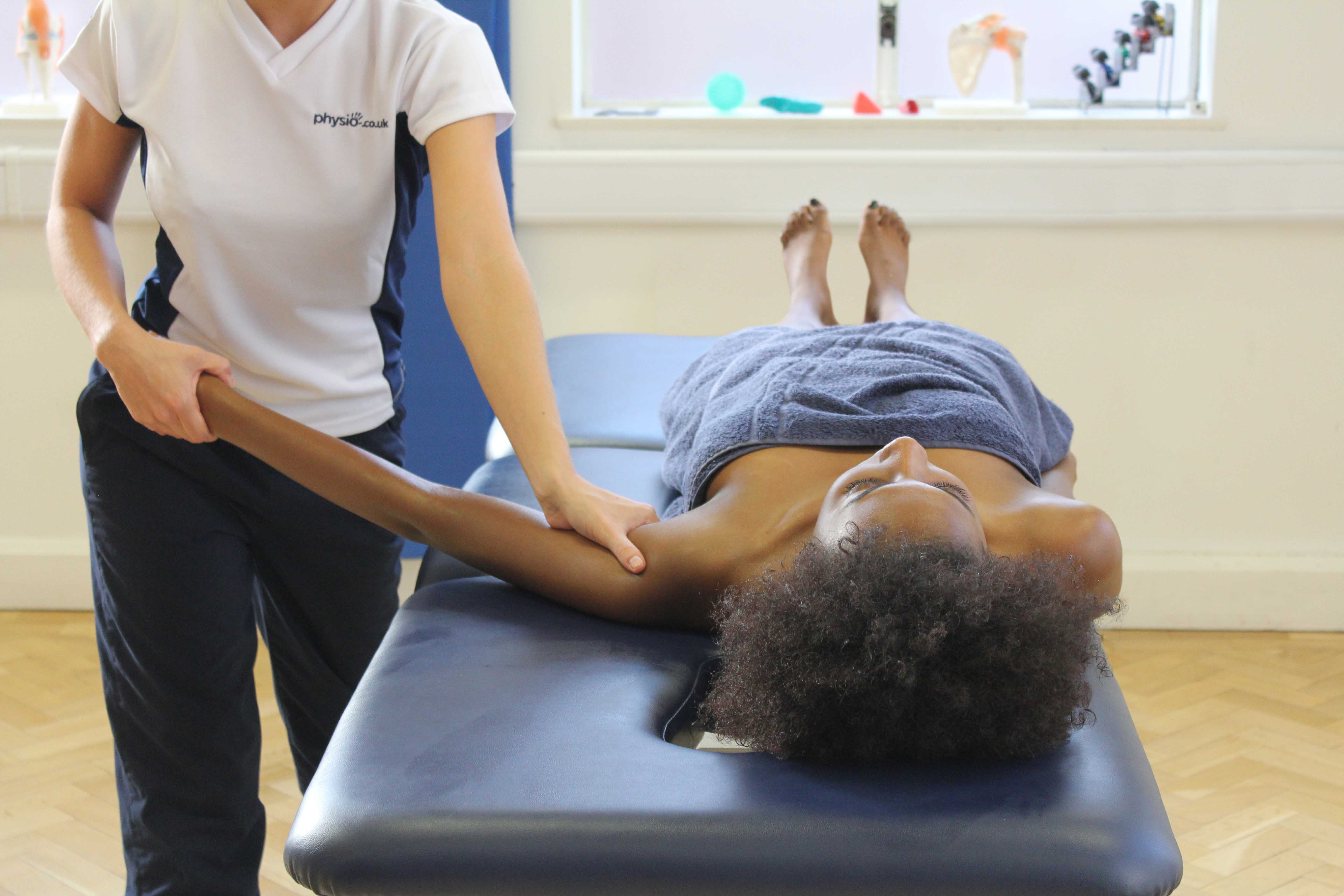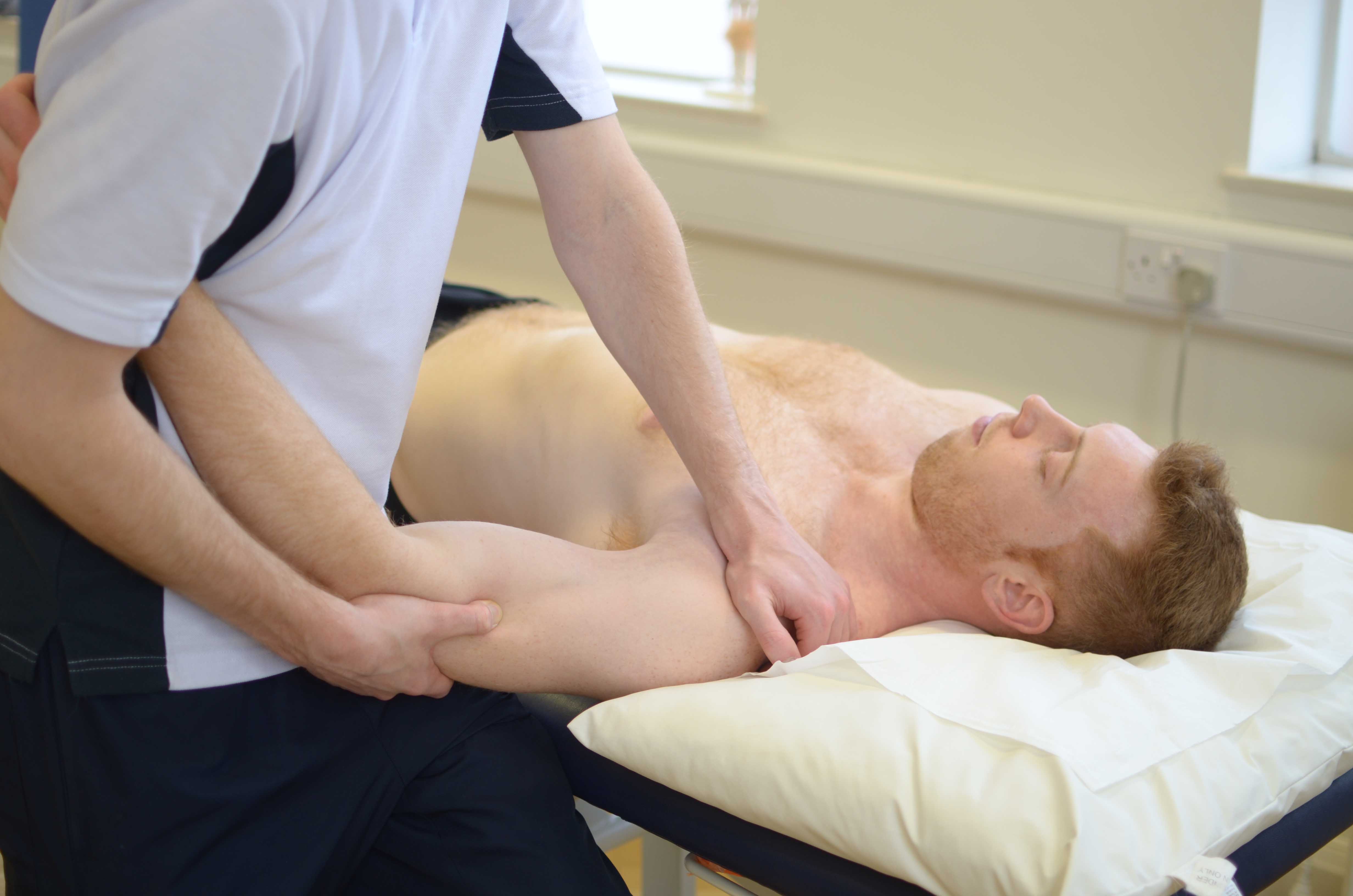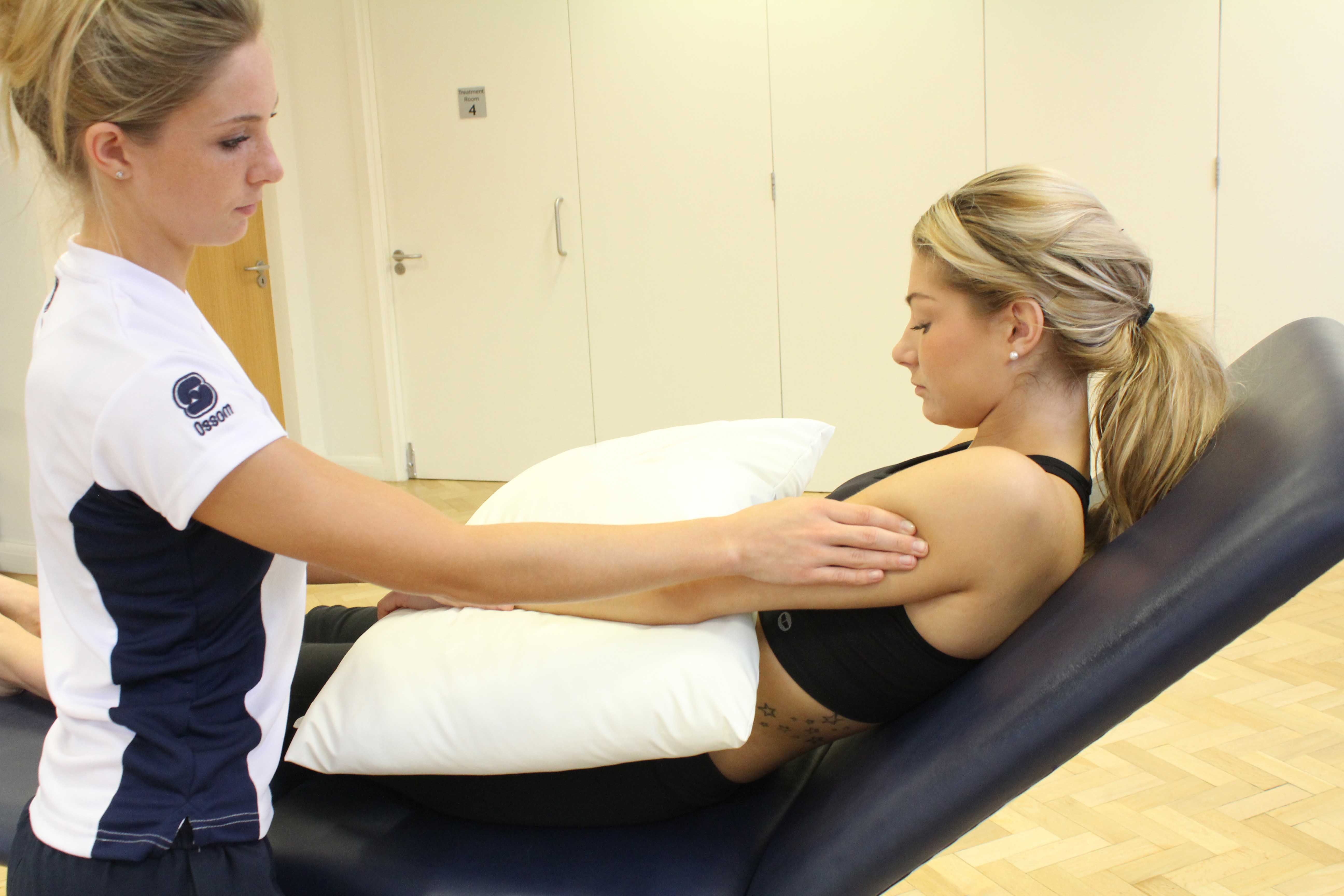Distal Triceps Avulsion Repair
Distal triceps avulsion occurs when your triceps tendon tears off the bone at its distal attachment. This can happen through direct elbow trauma, overuse or degenerative changes with the usual mechanism of injury an eccentric overload of the muscle. This exerts too much tension on the muscle, which subsequently fails causing the tendon to tear off at the olecranon (elbow bone).
Triceps rupture will usually occur at the teno-osseous junction (point at which the tendon attaches to the bone/junction at which tendon meets bone) and a visible and palpable gap is present at the elbow where the tendon has been torn away. If you have ruptured your triceps you will normally hear a snap (tendon tearing off the bone) and have significant swelling and bruising and a distinct lack of elbow extension strength. Surgery is then needed to reattach the torn tendon.
The triceps muscle consists of three parts which originate from 3 different locations on the scapula and humerus. They then join together and form a single common attachment distally onto the olecranon process of the ulna. Together they work as an elbow extensor enabling you to straighten your arm.
 Above: Soft tissue massage of the tricep muscle of the upper arm
Above: Soft tissue massage of the tricep muscle of the upper armPhysiotherapy before Distal Triceps Avulsion Repair
Physiotherapy before distal triceps avulsion repair can be a useful intervention in managing acute symptoms, helping you to function as best possible. Physio.co.uk will provide a thorough assessment of your upper limb and design a comprehensive rehabilitation programme to help treat and manage your injury. With surgery sometimes delayed, physiotherapy can be a constructive adjunct in helping to prevent secondary complications and provide the best possible platform for surgery and post operative rehabilitation. Treatment will include:
- Cryotherapy
- Pain management
- Taping and bracing
- Soft tissue release
- Electrotherapy modalities
- Home exercise programme
- Advice on surgery and post surgical management
Symptoms following Distal Triceps Avulsion Repair
Following surgery your arm will be placed in a fixed, protective hinge brace that will limit the amount of movement you will be able to perform. This is done in order to optimise the recovery of the tendon and to reduce the stresses that the triceps tendon will experience if moved in its delicate condition. It is normal for you to experience various symptoms which the physiotherapists at Physio.co.uk will be able to help you manage. These include:
- Pain
- Swelling
- Bruising
- Restricted elbow flexion and extension.
 Above: Soft tissue massage of the biceps and deltoids of the upper arm
Above: Soft tissue massage of the biceps and deltoids of the upper armPhysiotherapy following Distal Triceps Avulsion Repair
Following distal triceps avulsion repair is likely your arm will be placed in a protective back slab for up to 6 weeks. Physio.co.uk will perform a thorough assessment to ascertain the condition of your arm. Through this, a problem list and action plan will be constructed and a rehabilitation programme constructed specific to your needs and goals. This will be in line with surgical protocols to ensure accuracy and effectiveness of rehabilitation.
Weeks 1-3
Initial management following surgery is focussed on minimising the body’s inflammatory response, encouraging movement and protection of the repair. Your arm will be placed in protective hinge brace held at 60˚flextion in order to prevent active movement and potentially damage the repair. Treatment will include:
- Cryotherapy
- Pain management
- Wound management
- Gentle mobilisations within fixed range
- Passive movement exercises for flexion, extension, pronation and supination
- Active movements of flexion and extension between 0 and 60˚ flexion
- Range of movement exercises for shoulder, wrist and hand
- Scapular stability exercises
- Soft tissue release
- Scar massage
- Advice and education
 Above: Passive stretch of muscles and connective tissue of the uppper arm
Above: Passive stretch of muscles and connective tissue of the uppper armWeeks 4-6
Each week your hinge brace restriction will be reduced to encourage movement and help promote maximum tendon healing. Your brace will be held at 90˚ at week 4 and use will be discontinued by week 6. Active movement will be increases and we will integrate light strength work into your programme. Treatment will include:
- Passive range of movement
- Active movement between 0 and 90˚ flexion
- Massage
- Trigger point therapy
- Scapular stability
- Rotator cuff strengthening
- Grip strengthening
- Isometric triceps strengthening
Weeks 6-12
At this stage, your hinge brace will be discontinued and full active range of movement can commence. You will begin to see improvement in strength and you will be encouraged to return to light work. Treatment will include:
- Active movements between 0 and 120˚ aiming for full range of motion
- Begin and progress weighted triceps training
- Eccentric strengthening begins at 9 weeks
- PNF stretching
- Proprioceptive training
- Scapular control through range
- Introduction of functional, occupational and sport specific exercises
 Above: Soft tissue massage of the biceps and deltoids of the upper arm
Above: Soft tissue massage of the biceps and deltoids of the upper armWeeks 12+
Following 12 weeks of physiotherapy, Physio.co.uk will Physio.co.uk will intensify your rehabilitation to ensure a timely and effective return to activities. We will continue to develop your programme to your personal needs and progress using advance techniques and innovative exercises. Full recovery can take up to 6 months and Physio.co.uk is fully committed to helping you achieve your maximum potential. Our goals will be to achieve full range of movement and strength with a return to full function within this timeframe. Treatment will include:
- Achieve full range of motion (if not already)
- Muscular endurance training
- Advanced proprioceptive training
- Advanced strengthening programme throughout range
- Continued occupational and sport specific training
- Maintenance of tissue length
- Long term home exercise programme
- Advice and long term management
Summary
Distal triceps avulsion is an uncommon injury where the tendon of your triceps muscle is torn away from the olecranon (elbow bone) to which it attaches. This can happen through direct trauma or through degenerative changes which weaken its structure making the tendon susceptible to injury. A surgical repair is performed to reconnect the torn tendon back on to the bone. Following surgery, physiotherapy is an integral component of rehabilitation which helps restore movement, strength, muscle integrity and function. Physio.co.uk will provide a comprehensive and thorough rehabilitation programme to ensure a timely and effective return to your pre-operative state using your goals and personal outcomes to help direct treatment. Call Physio.co.uk now on 0330 088 7800 for more information or to book an appointment please contact us.

 0330 088 7800
0330 088 7800

































